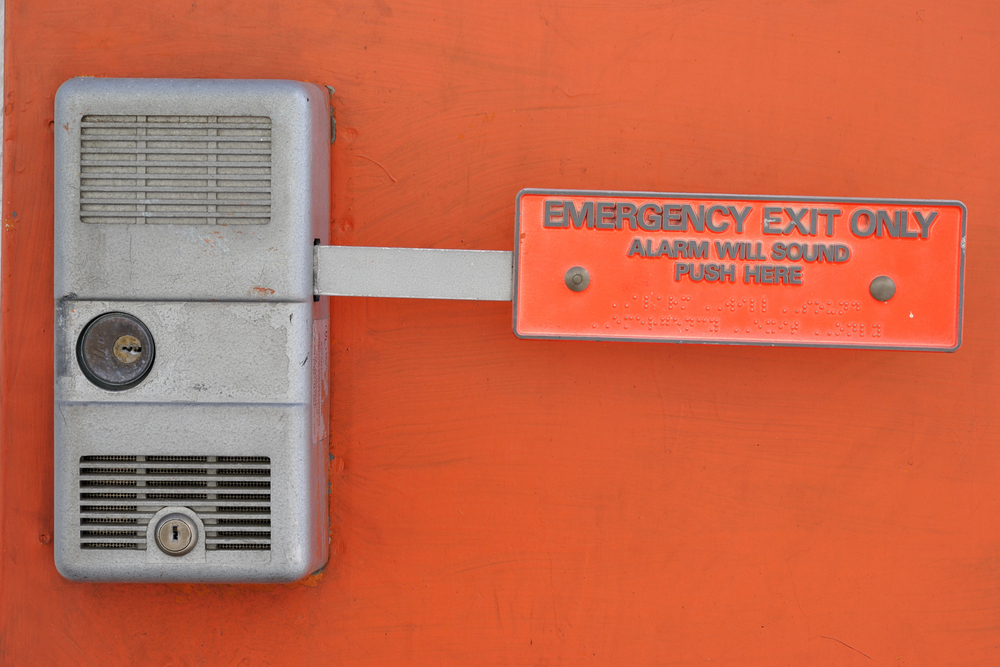 22
Oct
22
Oct
Emergency Exit Door Requirements: A Comprehensive Guide
- 0 Comment(s)
- October 22, 2024
Emergency exit doors play an essential role in ensuring the safety of building occupants during emergencies. These doors are designed to provide a quick and secure exit route, allowing people to evacuate safely in a fire or other hazardous situations. To ensure they serve their purpose effectively, emergency exit doors must adhere to stringent regulations and emergency exit door requirements. Understanding these requirements is critical for business owners, facility managers, and property developers.
In this comprehensive guide, we will take a closer look at the key emergency exit door requirements as outlined by the National Fire Protection Association (NFPA), local fire codes, and best practices. From material specifications to accessibility and maintenance, we will cover all the details to ensure your emergency exit doors are compliant and functioning as they should be.
The Critical Role of Emergency Exit Doors
Emergency exit doors are more than just points of egress; they are lifelines in emergency scenarios. Whether in a small business, a commercial building, or residential homes, these doors provide an immediate escape route when primary exits are blocked or inaccessible due to fire, smoke, or other hazards.
A proper emergency exit door must lead directly to a safe, open space where occupants can gather away from danger. These doors are usually strategically located near hallways, stairwells, and high-traffic areas to ensure easy access during evacuation.
Given their importance, emergency exit doors are subject to strict regulations to protect lives and prevent disasters. In the event of an emergency, every second counts. Ensuring that these doors meet local fire codes and the emergency exit door requirements of the NFPA helps to guarantee a safe and efficient evacuation process.
Core Emergency Exit Door Requirements
To function properly and comply with fire safety regulations, emergency exit doors must adhere to several core requirements. These include the materials used in their construction, their location, accessibility, and their role in the overall building evacuation strategy.
● Fire-Resistant Materials
One of the primary requirements for emergency exit doors is that they must be constructed from fire-resistant materials. The fire resistance of these doors is crucial in preventing flames and smoke from spreading between different areas of a building. According to the NFPA’s Life Safety 101 code, doors must be rated based on the number of floors they connect:
- One-hour fire-resistance rating for doors connecting fewer than three floors.
- Two-hour fire-resistance rating for doors connecting more than three floors.
The fire-resistant materials used in emergency exit doors help slow the spread of fire, allowing occupants more time to evacuate safely. It is critical that these doors are professionally installed and regularly inspected by experts, particularly in environments like fire extinguisher service locations, where the potential for fire-related incidents is higher.
● Placement and Number of Exits
Every building, whether commercial or residential, must have enough emergency exits based on its size and occupancy. The general rule is that at least two exits should be available on every floor. However, the exact number depends on the building’s specific layout and use.
For larger buildings or spaces that accommodate more people, additional exits may be required to avoid overcrowding or bottlenecks during an evacuation. For instance:
- Buildings with more than 49 occupants but fewer than 500 must have at least two emergency exits.
- Buildings with more than 500 occupants must have at least three exits.
- Buildings with more than 1,000 occupants must have at least four exits.
These exits must be placed far enough apart to ensure that if one exit becomes blocked, people can still safely use the other exits. In addition, they should not be placed too close together, as this would increase the risk of both exits becoming compromised by the same fire.
● Accessibility and Unobstructed Paths
A crucial part of emergency exit door requirements is that the doors and their corresponding paths must be easily accessible and unobstructed. During an emergency, these doors should be readily available to all occupants, without any obstacles that could impede access.
Emergency exits must be marked clearly with illuminated signs to guide occupants toward the nearest exit, especially in low-light or smoky conditions. These signs are typically required to be visible from all directions within the building and must meet specific illumination standards to ensure they are functional during a power outage.
Moreover, the paths leading to emergency exits, known as egress routes, must be clear of any obstacles. This includes ensuring that furniture, equipment, or debris does not block access to the exits. Regular inspections should be conducted to ensure that these pathways remain unobstructed and comply with fire safety codes.
● Push Bars and Panic Hardware
Emergency exit doors should be designed for easy and immediate use during an emergency. This is why push bars, also known as panic bars, are commonly installed on exit doors. These horizontal bars allow occupants to open the door by pushing, eliminating the need to fumble with locks or handles during an evacuation.
Panic bars are especially important in high-occupancy buildings, such as shopping centers, schools, or office complexes, where quick and efficient evacuation is necessary. The spring-loaded mechanism of push bars ensures that even in a panic, the door can be easily opened by simply pressing the bar.
In addition to push bars, emergency exit doors should not have any locks, chains, or other devices that could hinder their use from the inside. The door must always open freely in the direction of travel, ensuring that people can exit the building as quickly as possible.
Importance of Exit Discharge Areas
The exit discharge is the area immediately outside the emergency exit door that leads to a safe gathering place or open space. This area is just as important as the door itself, as it provides the final stage of the evacuation process.
According to the NFPA, exit discharge areas must open directly into a public way, such as a street, sidewalk, or designated refuge area. These areas must be large enough to accommodate all building occupants and should not lead to any hazardous areas.
In some cases, exit discharge areas may be indoor spaces, such as vestibules or stairwells, but they must still provide direct access to the outside. Exit discharge areas should always be clearly marked and unobstructed to ensure smooth and efficient evacuation.
Maintaining Emergency Exit Doors
Ensuring that emergency exit doors remain functional and compliant requires ongoing maintenance and regular inspections. These doors and their corresponding systems must be checked to confirm that they are in good working order and free from any damage that could compromise their effectiveness.
● Regular Inspections and Testing
Emergency exit doors should be inspected regularly to ensure that they function correctly and meet all fire safety codes. This includes testing the push bars, checking for any signs of wear or damage, and verifying that the exit paths remain unobstructed.
Routine testing should also include verifying that the emergency exit signs are properly illuminated and that any alarms or sensors associated with the door are working as intended. In small businesses and residential homes, these inspections may be less frequent, but they are no less important.
● Cleaning and Maintenance of Fire-Resistant Doors
In addition to regular inspections, emergency exit doors should be kept clean and free from debris. Dust and dirt can accumulate in the push bar mechanism or around the door frame, causing the door to function improperly in an emergency.
Fire-resistant doors should be checked for any signs of damage, such as warping or cracks, that could affect their ability to prevent the spread of fire. Regular cleaning and maintenance will help prolong the lifespan of the doors and ensure that they remain effective.
How We Ensure Fire Safety Compliance
Maintaining emergency exit doors that comply with all relevant fire safety standards should be made a top priority. Our team at Yadkin Fire & Safety offers fast, professional service to ensure that your exit systems are always functional and ready for any emergency.
We take pride in providing expert inspections, cylinder services, and fire safety solutions to keep your business or property secure. With competitive pricing and a commitment to educating our clients, we ensure that you are prepared for any emergency with confidence.

